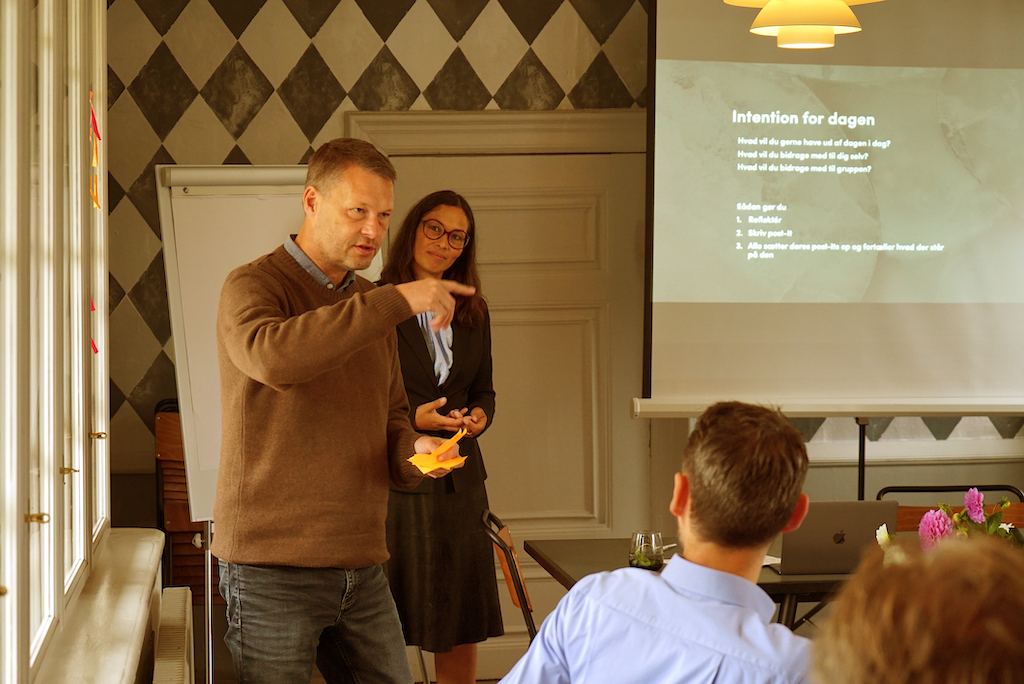
Share This Post
It is hard to be an effective leader without being able to navigate feelings and emotions. As whether we like it or not, workplaces flood with emotions and feelings. Consciously and unconsciously. They govern people’s actions, behavior and determine whether they follow a leader or not. But what defines emotions and feelings and what are the difference really?
This question you’ll get an answer to in this article, and why understanding emotions and feelings can be highly beneficial in your leadership role. If you rather like to read in Danish then access the article here.
What is the difference between emotions and feelings?
When working with leaders we find that the level of emotional understanding, varies. Some, like the CEO on the picture are emotional savvy and it strengthens their leadership effectiveness. Some are new to navigating in the space of emotions.
In performing leadership understanding the nuanced differences between emotions and feelings is crucial for e.g., effective communication, decision-making, and team management. While often used interchangeably in everyday conversation, emotions and feelings have distinct characteristics that influence our behavior and interactions in unique ways. To navigate the complex landscape of human behavior, it’s essential for leaders to grasp these differences. Here’s a closer look at what distinguishes emotions from feelings, and how this understanding can enhance your leadership capabilities. Emotions and feelings are closely related but have distinct differences:
- Emotions: These are lower-level responses occurring in the subcortical areas of the brain (like the amygdala and the ventromedial prefrontal cortices) creating biochemical reactions in your body altering your physical state. Originally evolved to help our ancestors survive by producing quick reactions to threats, rewards, and everything in between. Emotions are universal. Examples include fear, anger, sadness, happiness, surprise, and disgust. They are often unconscious and can be triggered automatically.
- Feelings: These are subjective experiences of emotions and are influenced by personal experiences, beliefs, and memories. Feelings occur in the cortical areas of the brain and are mental associations and reactions to emotions. They are personal and biographically based, making them much more complex. While emotions are physical, feelings are mental associations and reactions to emotions that are personal and acquired through experience. Examples include love, guilt, shame, embarrassment, pride, and joy.
In simple terms, emotions can be thought of as the raw, physical response to a situation, whereas feelings are the personalized interpretation of those emotions in your mind.
Would you like the newest knowledge and inspiration sent directly to you?
Then subscribe to our monthly newsletter
6 Key benefits of understanding emotions and feelings in leadership
In today’s dynamic and often emotionally charged workplace, effective leadership goes beyond technical skills and knowledge. A leader’s ability to understand and manage both their own emotions and those of their team members can significantly impact their effectiveness and the overall success of their organization. This emotional awareness is not only about recognizing feelings but also about leveraging this understanding to foster a positive, productive, and harmonious work environment. The benefits of understanding emotions and feelings in leadership roles are multifaceted, influencing everything from communication and relationship building to conflict resolution and change management. Therefor it is highly beneficial for several reasons:
- Emotional Intelligence: Recognizing and understanding one’s own emotions and feelings, as well as those of others, is crucial in leadership. This awareness can help leaders manage their reactions and responses to various situations, leading to more effective communication and decision-making.
- Empathy and Relationship Building: By understanding and acknowledging the emotions and feelings of team members, a leader can develop stronger relationships, foster trust, and create an inclusive and supportive work environment. This empathy can enhance team morale and collaboration.
- Conflict Resolution: Being able to differentiate between emotions (immediate reactions) and feelings (longer-term states based on interpretation) allows leaders to address workplace conflicts more effectively. They can respond to the underlying emotions driving a conflict, rather than just the surface-level expressions of those emotions.
- Motivation and Engagement: Leaders who understand emotions and feelings can better motivate their teams. They can create environments that trigger positive emotions and feelings, thereby improving engagement and productivity.
- Personal Development: Leaders who are aware of their own emotions and feelings are more likely to pursue personal growth, manage stress effectively, and maintain a balanced perspective, especially in challenging situations.
- Change Management: During times of change, employees often experience a range of emotions and feelings. Leaders who recognize and address these emotional responses can more effectively guide their teams through transitions.
In summary, this knowledge helps leaders to be more emotionally intelligent, empathetic, effective in conflict resolution, motivating, personally balanced, and adept at managing change. This leads to better team dynamics, improved performance, and a healthier workplace culture.
I will gladly take a non-binding chat – helping you to explore how you can benefit from your emotional intelligence. You can reach out here or take a closer look at me as a coach.
And remember that we help people in multinational companies to handle challenges in a meaningful way and take business to the next level. If you would like to be updated with new articles and videos, sign up for our mailing list. Your mail is not shared with anyone and there are advantages to being on the list e.g., getting the first chapter of Josefine Campbell’s book, Power Barometer – How to Manage Personal Energy for Business Success.












